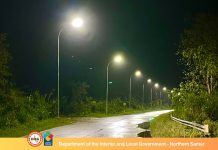TACLOBAN CITY – A budget of P 3.2 million has been allocated by the 2nd Leyte Engineering District of the Department of Public Works and Highways(2nd LED-DPWH) for the installation of 20 rainwater collection system (RWCS) in the district.
The implementation of the RWCS is in compliance with RA 6716 which mandates for the construction of water wells, rainwater collectors, development of springs and rehabilitation of existing water wells in several barangays.
Rainwater harvesting is the accumulation and deposition of rainwater for reuse on-site, rather than allowing it to run off.
Rainwater can be collected from rivers or roofs, and in many places, the water collected is redirected to a deep pit, a reservoir with percolation, or collected from dew or fog with nets or other tools.
The feasibility of rainwater harvesting in a particular locality is highly dependent upon the amount and intensity of rainfall.
The DPWH has come up with prototypes of rainwater collector system that would harvest, collect, and store rainwater from the roof or from a groundwater catchment or multi-purpose pavement for use during dry season.
Based on the DPWH prototype, the RWCS should have a reinforced ground storage tank, with capacity of 3,200 litters of water capacity.
2nd District Engineer Carlos Veloso said priorities for the project are public schools and markets.
“Schools without access to potable water facilities are the top priorities for this project while public markets are also targeted,” Veloso said.
As RWCS uses existing structures not specially constructed for the purpose, rainwater harvesting has few negative environmental impacts compared to other water supply project technologies.
Rainwater harvesting can satisfy the ever increasing demand for water supply as rainwater harvested can also be used for several agricultural and environmental purposes.
The RWCS project is also part of the government’s efforts to promote water conservation to address the diminishing freshwater supply due to over extraction of groundwater, water pollution, inefficient water infrastructure and climate change. (AHLETTE C. REYES)



